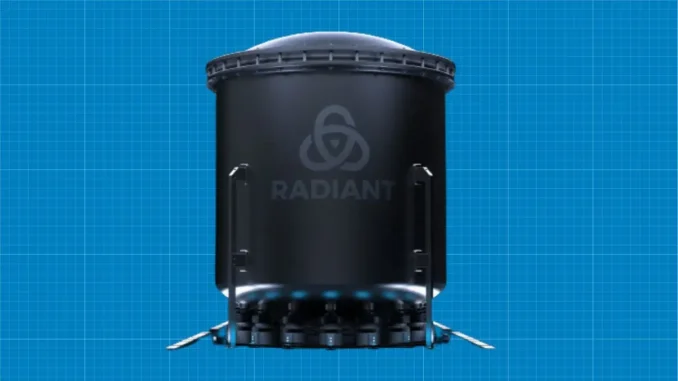
Doug Bernauer joined SpaceX as an avionics engineer in 2007 when the company’s Falcon rocket had not been successfully launched even once. He then worked on the Hyperloop, the Boring Company and even refueling Starship on Mars before he realized the true potential of nuclear power. In 2019, he set up a company called Radiant Industries that is working to build “meltproof” portable nuclear generators that can be packed in a shipping container.
With the world looking for ways to reduce its carbon emissions, nuclear energy is poised to make a comeback. Last month, Interesting Engineering reported how China currently has 24 nuclear power plants under construction and is set to become the world leader in terms of energy produced by nuclear energy.
While China’s nuclear power plants use conventional technology, Radiant Industries is building smaller nuclear reactors that could be deployed even in the remotest locations on the planet and cater to energy needs, whether for military or civilian purposes.
How does the portable nuclear reactor work?
Radiant’s plan for making its powerplant portable is to make a smaller nuclear reactor capable of generating one megawatt of energy, sufficient to power about 1.000 homes. At the core of the technology are TRISO particles which are the fuel for the reactor. Composed of uranium, oxygen, and carbon, these particles are covered with ceramic and carbon materials and are no larger than a poppy seed. The particles can then be put together as a sphere or large cylinder depending on the reactor design.
An important feature of the fuel is its high melting temperature which makes the reactor itself meltdown-proof. In the tests conducted so far, Radiant has taken TRISO particles to temperatures up to 3,000 Fahrenheit (1,648 degrees Celsius) and has not seen any concerning damage. This is higher than the temperature most nuclear reactors will ever reach.
The company has also used helium in its reactor design to act as a coolant to facilitate passive heat removal. This is another mechanism put in place to prevent a meltdown in case the reactor suddenly shuts down.
Under a federal program, Radiant has been working with Idaho National Laboratory and the Argonne National Laboratory to use their expertise into improving its product. Since the TRISO particles need to be refueled only once in five years, the reactor can be deployed at remote locations, which have not been connected to the grid and might be dependent on fossil fuels for energy needs.
For now, the company just intends to focus on the engineering of the reactor and seek regulatory approval for its designs and technology.
